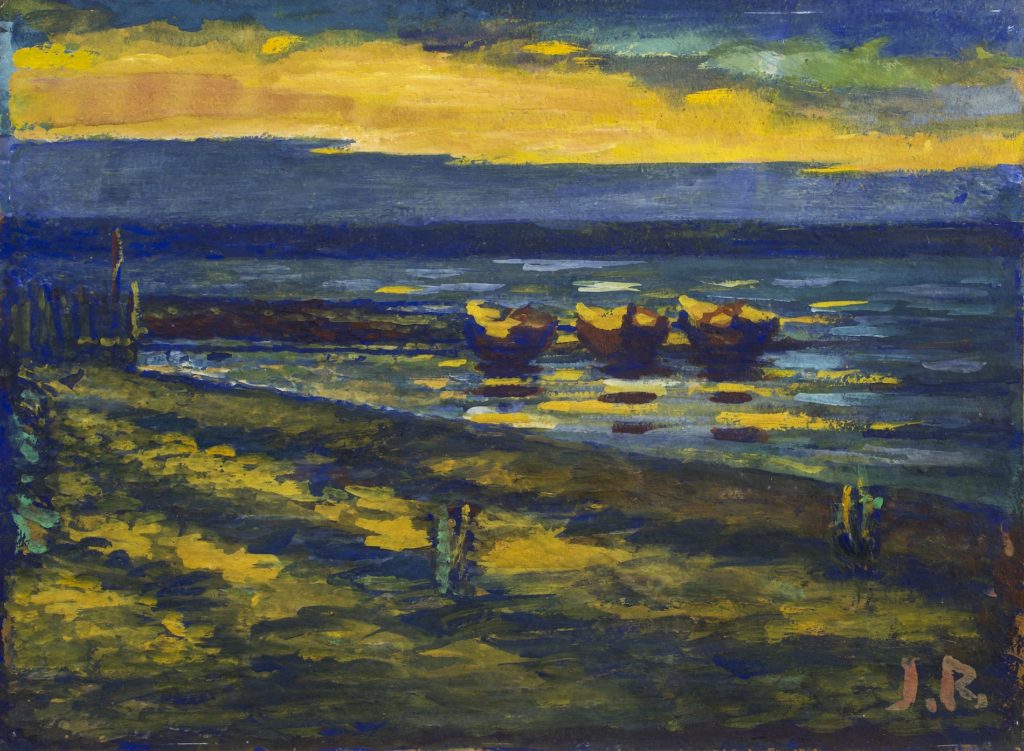
Even while Jamini Roy was exploring indigenous themes, he was simultaneously learning from the works of the great European masters. He delved into the studying of the elements of composition and techniques which later allowed him to paint local landscapes and portraits in this style.
Beyond the imitation of a particular style, the great artist worked out the notion of perspective beyond the conventional limits of naturalism to achieve harmonious balance and delightful dynamism in his landscapes. “He combines the intensity of chromatic brilliance with the free-flowing character of the brush strokes creating vistas that throb with light. The visible is certainly not discarded and is neither so subjected to design that nature submits to the pure pictorial pattern. Rather, the chromatic and the natural often play a complementary tune, one supportive of the other, such that of a patch go yellow against another of blue, need not stand in oppositional contradiction to their simultaneous descriptive identity as fields and distant trees or mountains, picked out by the rays of the sun.”1
But these landscapes are beyond just post-impressionistic color exercises, “viewed in the context of the entire oeuvre of an artist like Jamini Roy, such re-enactments do not restrict themselves merely to the art-school students regular attempts for copying, but tie-up with his efforts to evolve that personal mode of statement, which no matter how conscious or subliminal at the stage of the exercise, is part of a larger vision and intent.” 2
Text References:
1 Sanjoy Kumar Malik, Jamini Roy (1887-1972), Rajya Charukala Parshad (Charukala Bhavan Museum), Kolkata, March 2014, p. 45
2 Ibid, pg. 47
Auction Catalogue – South Asian Art – ‘Modern and Contemporary’ – March 12 -16, 2020